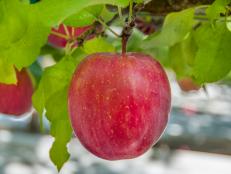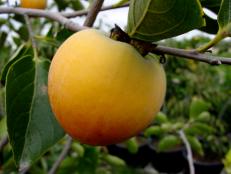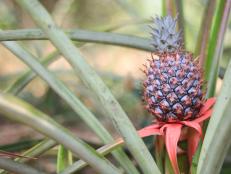Granny Smith Apples


With its sublimely tart flavor and unmistakable green hue, the Granny Smith apple (Malus domestica) is one of the most recognizable and beloved apples in the orchard. Its acidity and strong taste makes it a frequent choice for both baking and for eating as a hand fruit. Consistently rated among the top ten apples in popularity, it’s hard to believe it wasn’t part of the American experience until the 1970s. Its journey, however, was a long one and it all began in 1868 with a chance seedling discovered growing from a pile of discarded crab apples somewhere near Sydney, Australia.
As the story goes, Maria Ann “Granny” Smith (yes, there really was a “Granny” Smith) was cooking with French crab apples and discarded the remains in an ad hoc compost pile near a creek flowing behind her farmhouse. From the pile sprouted a chance seedling unlike any apple she had ever encountered. Chance seedlings are trees that grow without human intervention. New types of apples emerge as one type of tree is pollinated by another and in wild conditions it is often difficult to establish the pollinating tree. Smith could not establish the true parentage of this new variety (it is now suspected to have been the European Wild Apple), but was so taken with its bright flavor and versatility, she decided to propagate the trees herself.
“Granny” Smith died just a few years later, but her unique apples found a following among local growers, eventually gaining national attention in Australia in the 1890s after winning a prize for “Best Cooking Apple” at the Castle Hill Agricultural and Horticultural Show, inspiring others to cultivate the variety. By 1895, the Department of Agriculture recommended the Granny Smith for export, citing its late picking season and long shelf life.
Introduced to the UK in the 1930s, it was successful, in part, because its thick skin and firm flesh made it easy to ship and stock in supermarkets. In the 1970s, the special apple finally reached the United States, where it is now grown domestically.
In season from September through November, Granny Smith apples have become a staple of fall baking. Used extensively in seasonal pies, cakes, cobblers and crisps, it all began with a happy accident discovered by its namesake halfway around the world.















![Homegrown variety of winter squash. Homegrown winter squash. 195956_3603429601142_787136137_n[2].jpg](http://hgtvhome.sndimg.com/content/dam/images/grdn/fullset/2014/2/7/0/195956-3603429601142-787136137-n-2.jpg.rend.hgtvcom.231.174.suffix/1452646912247.jpeg)





























